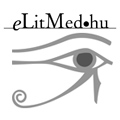The eLitMed.hu medical portal uses computer cookies for convenient operation. Detailed information can be found in the Cookie-policy.
Ca&Bone - 2005;8(03)
Content
[The role of calcium in the chemoprevention of colorectal cancer]
[One of the most exciting research areas of the past decade has concerned the chemoprevention of colorectal cancer (CRC). Numerous clinical studies have been conducted on the preventive role of NSAIDs, high fibre intake, selenium, phytooestrogens, hormone replacement therapy, antioxidants, COX-inhibitors, folic acid and calcium, however, their results are controversial. Among the suggested chemopreventive agents, the preventive role of calcium is supported by the strongest evidence.This paper aims to review the available facts on the role of calcium. Recent studies suggest that appropriate calcium intake may partially counterbalance the effect of the genes that contribute to the development of CRC. Experimental data show that calcium directly influences the expression of several genes involved in tumorigenesis and that it is also involved in a number of signalling pathways that control cell proliferation, differentiation and apoptosis.These effects mostly arise through the activation of the calcium sensing receptor. The main goal of this review is to draw attention to the established chemopreventive role of calcium in CRC. Published data suggest that a lifelong daily calcium intake between 1200 to 1500 mg (even 2000 mg in high risk groups) would significantly decrease the incidence of CRC by inhibition of tumorigenesis.]
[Serum 25(OH)-Vitamin D levels and bone metabolism in patients on maintenance hemodialysis]
[INTRODUCTION - Increasing evidence suggests that 25- hydroxy vitamin D3 (25(OH)D3) may contribute to the bone health of patients with chronic kidney disease.However, there is very little information available on the vitamin D3 status of patients with chronic renal failure. In a cross-sectional study we assessed the association between vitamin D3 status and parathyroid function, bone turnover, bone mass and structure in patients on maintenance haemodialysis. PATIENTS AND METHODS - Sixty-nine patients on maintenance haemodialysis were assessed by bone densitometry (DEXA) and quantitative bone ultrasound. Serum 25-hydroxy vitamin D3 levels and serum markers of bone turnover were simultaneously measured. RESULTS - A high prevalence of potentially significant vitamin D3 deficiency was found in this patient group; 59% of the patients had their 25(OH)D3 vitamin level below 20 nmol/l.There was a significant negative correlation between serum 25(OH)D3 and serum intact parathormone (iPTH) levels (r=-0.231, p<0.05) and this association remained significant after controlling for potential co-variables. Furthermore, a positive correlation was observed between serum 25(OH)D3 concentration and bone mineral density measured at the radius (r=0.424, p<0.01). Finally,we show for the first time that 25(OH)D3 levels are significantly and independently associated with broad band ultrasound attenuation (β =0.237, p<0.05) measured with calcaneal quantitative bone ultrasound in patients with chronic renal failure. CONCLUSION - Vitamin D3 deficiency may contribute to the impaired bone health of patients on maintenance dialysis, therefore, it seems to be warranted regularly monitoring and carefully controlling the D3-vitamin level of these patients.The results also suggest that quantitative bone ultrasound is useful in assessing bone health of patients with chronic renal failure.]
[The effect of sex hormone replacement on radial bone mineral content in boys with panhypopituitarism]
[INTRODUCTION - Children with pituitary insufficiency normally receive growth hormone and thyroid hormone substitution, but glucocorticoid treatment is rarely necessary. Sex hormone replacement is introduced in puberty, which, at the same time, promotes growth and bone maturation. In this study the effect of testosterone replacement on bone mineral content was examined. PATIENTS AND METHODS - Nine boys (16.3±1.3 years) with hypopituitarism were involved in the study who had been receiving growth hormone and thyroid hormone replacement for several years by the beginning of the study.Androgen was substituted by the intramuscular administration of 50 mg testosterone biweekly.The children's height,weight, the rate of pubescence, and bone age were checked, and bone mineral density was measured by single photon absorptiometry every six month. During the substitution treatment serum thyroxin and testosterone levels remained in the normal ranges. RESULTS - A significant increase in bone mineral density was observed during the testosterone treatment, with Z-scores -1.80, -0.91 and +0.14 at baseline, 12 and 24 months, respectively (p<0,001). Z-scores adjusted for bone age remained in the normal range throughout the study (-0.904 at baseline and -0.946 at one year). CONCLUSION - The increase rate of bone mineral density (0.16 g/cm/year) was significantly higher compared both to the normal reference in this age group (0.07 g/cm/yr, p=0.0015) and to the normal reference relative to their bone age (p<0.0006). The increase in bone mineral density suggests that testosterone replacement has an important role both in the quantitative and qualitative development of bones.]
[About risk factors of osteoporotic fractures - Fractures of bones, quality of bone, age, quality of life]
[The osteoporoticus bone fractures one of the health problems what's coming with aging and the old age.]
[Hungarian and international results in compliance of antiporotic treatment]
[The studies investigate the compliance of treatment showed that the compliance is one of the most important factor which influence the success of an otherwise effective treatment. Not only the patients, but also the doctors and nurses are responsible for the unsuccessful treatment. Our article shortly review Hungarian and international data about the compliance of antiporotic treatment and summarises a study which we plan to achieve in the near future.]
1.
Clinical Neuroscience
[Headache registry in Szeged: Experiences regarding to migraine patients]2.
Clinical Neuroscience
[The new target population of stroke awareness campaign: Kindergarten students ]3.
Clinical Neuroscience
Is there any difference in mortality rates of atrial fibrillation detected before or after ischemic stroke?4.
Clinical Neuroscience
Factors influencing the level of stigma in Parkinson’s disease in western Turkey5.
Clinical Neuroscience
[The effects of demographic and clinical factors on the severity of poststroke aphasia]1.
2.
Clinical Oncology
[Pancreatic cancer: ESMO Clinical Practice Guideline for diagnosis, treatment and follow-up]3.
Clinical Oncology
[Pharmacovigilance landscape – Lessons from the past and opportunities for future]4.
5.









